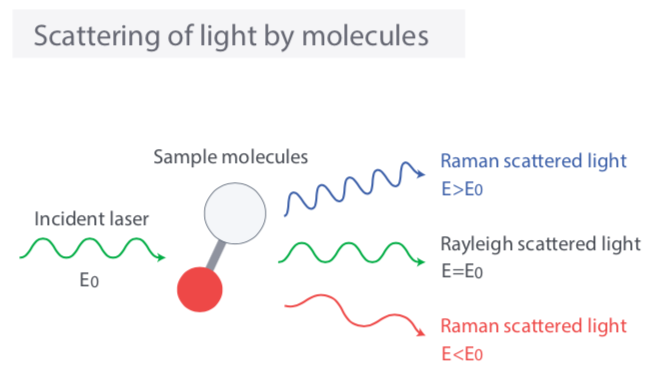[Introduction] Introduction to Raman Spectroscopy
About Raman Spectroscopy
First of all, I study using the above following books.

Title : Introductory Raman Spectroscopy(Second edition)
Author : John R.Ferraro, Nakamoto and Chris W.Brown
Publisher : Elsevier, 2003
Sir Chandrasekhra Venkata Raman
In 1928, Sir Chandrasekhra Venkata Raman discoverd the phenomenon. He detected when blue light passes through the solution, green light is scattered. Nowadays, with the development of spectrometers, we can measure the intensity of light as bands or repetitive bands according to frequency on spectrum.
Raman spectroscopy is that when monochromatic light is exposed to a gas or a transparent liquid solid, slightly different wavelengths are emitted in the diffuser tube. At this momment, the scattering means when light passes through a medium, it changes the wavelength of light so that some of the light travels. If it changes wavelength, this phenomenon called ‘Raman Scattering’ or ‘Raman effect’.
Raman Scattering
When light passes through a medium, some of the light is scattered and deviates from the direction of propagation. At this time, the scattered light has the original energy as it is, but it is less than the energy of the original light. The process of the scattered light maintaining the original energy is called Rayleigh scattering or Elastic scattering. Contrary the process of scattering while losing or gaining energy is called Raman scattering or Inelastic scattering.

Stokes Shift
When a molecule receives light energy, it is excited to an excited state and then falls back to the ground state. As described above, when emitting while maintaining the incident energy of the light source, it is rayleigh scattering and the other case is raman scattering. At this momment, after absorbing the vibrational energy of the molecule and returning to the ground state, this is called ‘Stokes Shift (effect)’. Because the energy of incident light is absorbed by the molecule, emitting energy is lower than original energy and the wavelength of light is longer.
On the other hand, when a molecule releases its vibrational energy and returns to ground state, it is called ‘Anti-Stokes Shift (effect)’. Likewise, wavelength of emitting light is shorter.[Figure. 2]

Significance
The energy absorbed or emitted by a substance depends on the molecular structure and density of each substance. In addition, since the scattered light from Raman scattering is unique to each material. Thus, We can determine the molecular structure of the material by analyzing the scattered light.

Leave a comment